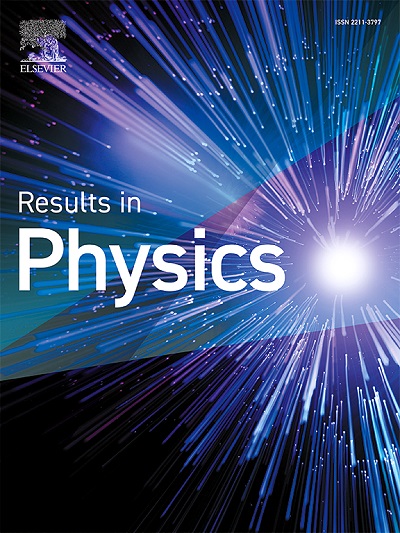Period-doubling route to chaos in perturbed period-one nonlinear dynamics
IF 4.4
2区 物理与天体物理
Q2 MATERIALS SCIENCE, MULTIDISCIPLINARY
引用次数: 0
Abstract
An all-optical method is proposed for destabilizing the period-one (P1) nonlinear dynamic state using a system of three cascaded semiconductor lasers across two optical injection stages. Leveraging the P1 dynamic state in the first optical injection stage as a tunable microwave oscillator, this approach generates broadband chaotic dynamics without the need for high-frequency microwave sources. By tuning the second injection stage such that the lower oscillation sideband of the injecting P1 state is offset by a few gigahertz from the injection-shifted cavity resonance of the second laser operating also in the P1 dynamic state, the P1 state is destabilized into a chaotic dynamic state. The resulting dynamics are influenced by both the power and frequency of the lower oscillation sideband of the injecting P1 state, leading to a cascade of period-doubling bifurcations that culminate into chaos. The induced chaos exhibits broad standard and effective bandwidths exceeding 30 GHz and 15 GHz, respectively, highlighting the potential of this approach for applications in broadband chaotic systems.
求助全文
约1分钟内获得全文
求助全文
来源期刊

Results in Physics
MATERIALS SCIENCE, MULTIDISCIPLINARYPHYSIC-PHYSICS, MULTIDISCIPLINARY
CiteScore
8.70
自引率
9.40%
发文量
754
审稿时长
50 days
期刊介绍:
Results in Physics is an open access journal offering authors the opportunity to publish in all fundamental and interdisciplinary areas of physics, materials science, and applied physics. Papers of a theoretical, computational, and experimental nature are all welcome. Results in Physics accepts papers that are scientifically sound, technically correct and provide valuable new knowledge to the physics community. Topics such as three-dimensional flow and magnetohydrodynamics are not within the scope of Results in Physics.
Results in Physics welcomes three types of papers:
1. Full research papers
2. Microarticles: very short papers, no longer than two pages. They may consist of a single, but well-described piece of information, such as:
- Data and/or a plot plus a description
- Description of a new method or instrumentation
- Negative results
- Concept or design study
3. Letters to the Editor: Letters discussing a recent article published in Results in Physics are welcome. These are objective, constructive, or educational critiques of papers published in Results in Physics. Accepted letters will be sent to the author of the original paper for a response. Each letter and response is published together. Letters should be received within 8 weeks of the article''s publication. They should not exceed 750 words of text and 10 references.
 求助内容:
求助内容: 应助结果提醒方式:
应助结果提醒方式:


